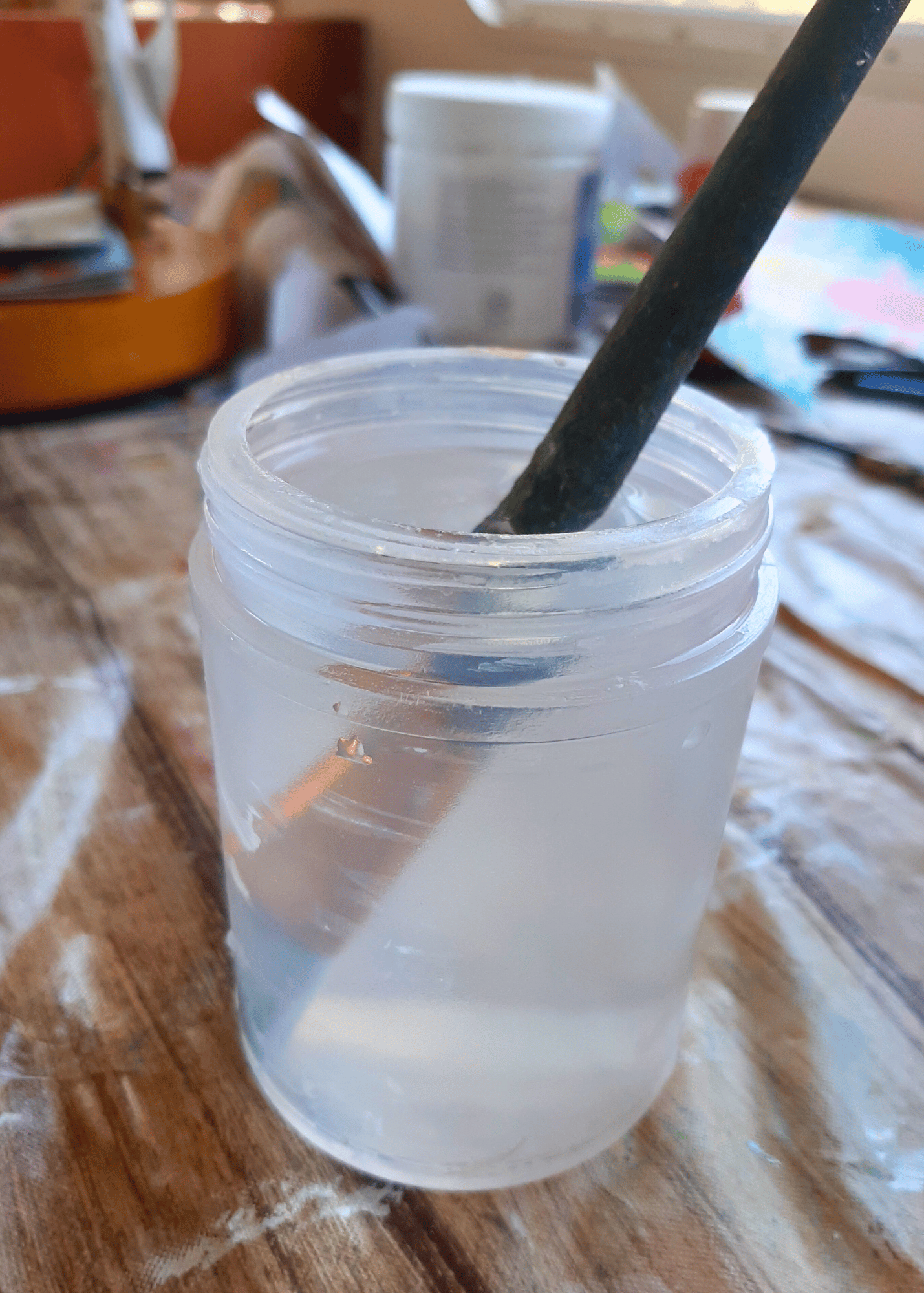6 Art Hacks I Wish I Knew Sooner
Every artist collects nuggets of wisdom along their journeys. Helpful little tidbits we wish we’d snagged earlier that make our art and creative process really flow. Whether it's learning to embrace mistakes on our wild ride of creativity or discovering the power of a supportive community, these nuggets become the secret weapons in an artist’s toolkit!
They remind us that chasing perfection isn't the goal—what really matters is being your fabulous, authentic self! As we gather these tidbits, they weave together a vibrant tapestry of experience, guiding us through life’s messy challenges and daring us to break down some serious barriers.
By sharing these lessons with fellow artists, we contribute to a collective growth, fostering a community where creativity can thrive and flourish.
So today I’m sharing six simple things I wish I’d known when I started my mixed media journey.
Water
Water is an essential part of mixed media and painting but here’s a little secret: life becomes a whole lot smoother with two trusty cups! One cup should be dedicated to rinsing your brushes, the other should be pristine water for mixing with your paints. This nifty trick keeps your colors vibrant and keeps your palette from turning into a muddy mess!
Additionally, having a fresh water source on hand means you can blend and dilute your paints more effectively, giving you greater control over your work. This small adjustment can significantly enhance the quality of your artwork and streamline your creative process. So, next time you set up your creative station, don’t forget to have two cups of water at the ready—your future self will thank you.
2. Acrylic + Water
I was always told that adding water to acrylics was a cardinal sin because it breaks down the molecular content of the acrylic. But guess what? Artists everywhere actually use water to achieve different effects and textures. By carefully controlling the amount of water, you can create washes, glazes, and even mimic watercolor techniques. The trick? Find that sweet spot and get to know how water plays with your favorite acrylic brand.
There are magical mediums out there that can thin your acrylics without robbing them of their vibrancy or durability. These mediums can help you get that perfect texture while keeping your paint as fierce as ever. It's also worth playing around with different surfaces and tools to see how they affect the outcome of your art.
Art is about diving into the wild waters of exploration and showing off your unique flair! Sure, traditional tips and tricks lay the groundwork, don't be afraid to break the rules and find your own path. Your unique approach and willingness to experiment can lead to surprising and beautiful results.
3. Surfaces
This was a game-changer for me! The surface you’re painting on makes a huge difference and trust me, not all canvases are created equal! Each canvas has its own unique texture, absorbency, and flexibility, which can dramatically affect the outcome of your work. A coarse surface can add interesting texture while a smooth one is perfect for those meticulous details that call for a delicate touch.
Experimenting with different surfaces can open up a world of creative possibilities and help you find what best suits your style. From classic canvases to quirky wood panels, and even fabric and metal – each surface is a new playground for your creativity. Throw caution to the wind, experiment and see where your creativity takes you!
4. Brush Maintenance
Leaving your brushes in water to long is a one-way ticket to bent bristles and a sad, short lifespan. Sounds like common sense, right? Wrong! Tons of newbie artists actually do this. Instead, clean them thoroughly after each use, reshape the bristles, and store them like the treasures they are. Following this brush care routine every time, ensures your brushes remain in good condition, ready to create beautiful works of art for years to come.
5. Preparation
If you've snagged yourself a premade “art journal” it’s a great idea to prep it first. Start by flipping through the whole journal to soak up its layout and check out the paper. It’s extremely important to remember that mixed media can turn your journal into a hefty heavyweight champ, and your poor spine might not be up to the challenge! So, it’s time to make some tough choices: rip out a few pages, glue some together, or reinforce that binding. Trust me, the prep work will spare you a boatload of tears and frustration down the road.
6. Modge Podge
I’m a huge fan of Modge Podge! It’s been my go-to for years. But then I moved to a warm climate and surprise! —I uncovered its sneaky little secret. In the heat, the once-reliable adhesive becomes sticky and tacky, making my carefully crafted art prone to smudging and damage. To say I was annoyed is an understatement. Now I’ve made the switch to matte medium, and now we’re back in business! Matte medium offers the same versatility and adhesive qualities without the vulnerability to heat. My art stays perfect, regardless of the temperature.








